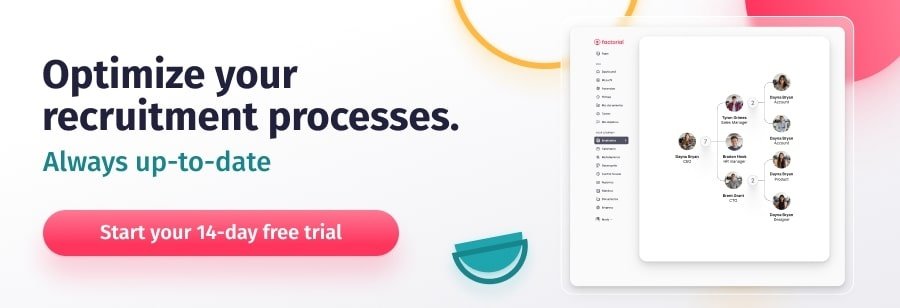The way people work is changing. An increasing number of people are now choosing to become independent contractors due to job uncertainty and changes in the economy. In fact, a recent survey by Gallup found that 14% of workers now claim that being an independent contractor is their primary job. And this is changing the way companies employ their workforce and forcing employers to evaluate the pros and cons of hiring an independent contractor vs. employee.
If you’re considering hiring external staff, then it’s important that you understand the difference between independent contractor and employee status. With that in mind, today we are sharing an independent contractor vs employee checklist to help you understand what the different types of worker classification are. We will look at an independent contractor vs. employee chart to highlight the biggest things you need to be aware of and discuss the implications of the misclassification of employees.
What Is an Independent Contractor vs. Employee?
When it comes to small business hiring, there are many types of employment contracts you can offer the people that work for you. You can offer a fixed-term employment contract, a part-time contract, a casual employment contract, and a zero-hour contract, amongst others. You can also take on an independent contractor.
But what is the main difference between these contract types, and what do you need to be aware of? How does the law differentiate between independent contractor vs. employee status?
According to the IRS and the Fair Labor Standards Act, the difference between employee and independent contractor status is primarily down to:
Behavioral Control
Employees usually work specific hours that are defined by their contract, either remotely or at the employer’s premises. They use the company’s tools and resources to perform their duties.
Contractors usually define their availability (when and where they will work) and they tend to use their own tools (laptops, software, etc.)
Financial Control
Employees are paid an hourly wage or a monthly salary, as defined in their permanent employment contract. The employer withholds tax contributions and defines on which day of each week/month the employee will be paid. Employees get a payslip and no invoices are required.
Contractors define their own rates and payment terms, and issue invoices for all completed work. Retainers are also common for contractors who work with a company on a regular basis or who require advance payment for supplies. Companies do not typically withhold taxes when they pay a contractor’s invoice.
Relationship
Employees develop an employer-employee relationship with a company, and full-time employees are likely to dedicate all working hours to the company. As a workforce, you expect them to perform all work that is essential to the business.
Contractors tend to perform short term, specialized functions. This might be on a temporary basis, for a specific project, or for certain duties on an ad hoc basis. Although contractors are still subject to certain obligations, such as complying with a confidentiality agreement, they will usually work for other clients too so they don’t have the same level of loyalty and commitment as employees.
Independent Contractor vs. Employee Chart
There’s a lot to consider before you take someone new on in your business. You need to establish their role and responsibilities, prepare their work station and work out if they will need training, amongst other things (check out this hiring process checklist template for more info on this).
However, it’s equally important to determine what the employment relationship will be like, how often they will work for you, how much control you will have, and what their working hours will be. In other words, whether it makes more sense to take them on as an independent contractor vs. employee.
Here’s a handy independent contractor vs. employee chart to help you understand the biggest differences between the two types of employment.
When you hire an employee, they will:
- Work at a specific time and place set by you
- Usually work exclusively for you
- Probably need some form of training
- Use your tools and resources to perform their duties
- Take instructions and commands from you
- Receive a salary or hourly wage
- Often receive employment benefits, like health care and paid time off
- Be subject to financial deductions such as income tax and social security, amongst others
- Have the right to join a union
- Often be protected by state and federal law for overtime, minimum wage, and employment discrimination issues.
In contrast, when you take on an independent contractor, they will:
- Often dictate when and where they will work
- Probably work for multiple companies
- Organize their own training in most cases
- Uses their own tools and resources
- Invoice for their time and be paid a negotiated rate or flat fee
- Not usually receive employment benefits or have the right to join a union
- Pay their own taxes
- Generally not be entitled to receive overtime or protection for employment discrimination
Why Hire an Independent Contractor vs Employee?
Now that we’ve looked at the differences between an independent contractor vs. employee, let’s take a look at the pros and cons of each form of employment to help you understand which would work best for your small business.
Contractor Pros & Cons
Pros of hiring an independent contractor:
- Saves you money. Although independent contractors usually charge more, you’ll save on other expenses such as employee benefits and taxes.
- Greater flexibility. You have a lot more flexibility when it comes to dismissing contractors once a project has concluded.
- Reduced liability: As an employer, you are legally required to protect certain employee rights. These include the right to a safe working environment, minimum wage, and protection from discrimination and unjustified termination of employment contract.
Cons of hiring an independent contractor:
- Less control. Contractors typically operate independently. They define their own schedules and decide what equipment they need, what processes they will follow, and what the timeline of a project will look like.
- Increased health and safety liability. Hiring a contractor can be riskier in terms of H&S. This is because your insurance usually covers any accidents your employees have at work. However, if a contractor has an accident on your premises, they can sue you for damages if they can prove negligence.
- Temporary relationship. A contractor has less loyalty than an employee. They can also move on to another client once the project they were hired for comes to an end.
Employee Pros & Cons
Pros of hiring an employee:
- Increased loyalty. In-house employees usually have a great sense of loyalty toward your business. This means they are more likely to stick with your company and support you as the business grows.
- More control over training. Although you usually have to invest more time into training an employee, you have more control over what they learn and the processes they follow. Plus, an employee is likely to stay with you longer so overall you will have to give less training compared to the frequent turnover you’d get with short-term contractors.
- Brand ambassadors. A happy employee is your best brand ambassador. They are loyal and invested in your business, so they are far more likely to promote it as it’s in their best interests to help your company develop and grow.
Cons of hiring an employee:
- Less flexibility. When you hire independent contractors, you can adjust your workforce according to current needs. If you have a heavy schedule, you can take on more contractors. You can then end the contract once things calm down. However, when you hire an employee, you cannot terminate their contract just because you are having a slow month.
- Employee benefits. Hiring an employee entails additional expenses in terms of taxes, pensions and employee benefits, such as medical coverage.
Why Is It Important to Distinguish an Employee vs. an Independent Contractor?
There are a number of legal reasons why it’s vital that you categorize your team properly during the recruitment and selection process:
Legal Requirements
Whether you classify someone as an employee vs. independent contractor will determine whether you are obligated to protect their legal rights relating to reliable pay, benefits, and protection from discrimination.
You also need to be aware of any legal requirements within your state. For example, a new bill was signed into law by the State of California Department of Industrial Relations in 2019 (Assembly Bill (AB) 5) which addresses the “employment status” of workers when the hiring entity claims the worker is an independent contractor and not an employee.
Tax Obligations
Generally speaking, you must withhold and pay income taxes, social security taxes and Medicare taxes as well as pay unemployment tax on wages paid to an employee. You do not generally have to withhold or pay any taxes on payments to independent contractors. You can find more information on employer tax obligations on the IRS website or this guide on setting up payroll for small businesses.
Consequences of Employee Misclassification
It’s important to classify your workers correctly to ensure you comply with all employment and tax laws in the US. Worker misclassification can result in a number of problems for you as an employer. For example, misclassification of independent contractors can leave you open to an employee misclassification lawsuit. This can result in hefty fines and penalties, especially if you fail to pay the correct minimum wage or provide owed holidays or neglect to pay the right taxes to state and federal governments.
A misclassified employee can also result in financial claims including reimbursement for overtime, retirement contributions, or social security contributions, amongst other benefits. Make sure you are aware of all your obligations relating to both your employees and your independent contractors.
If you’re still not sure whether someone you are taking on would be classified as an independent contractor vs. employee, then don’t worry. You just need to fill out Form SS-8, Determination of Worker Status for Purposes of Federal Employment Taxes and Income Tax Withholding, and the IRS will let you know if they are an employee or a contractor.



